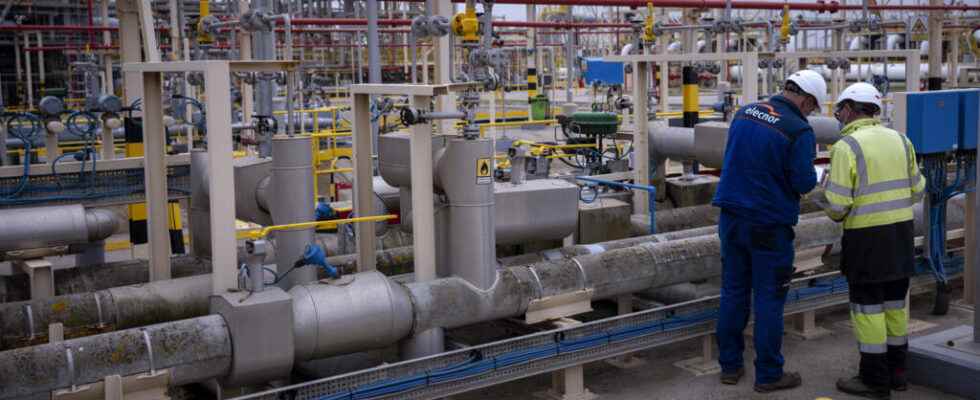The wholesale price of natural gas in Europe fell on Monday January 2 to its lowest level since the start of the Russian offensive in Ukraine on February 24, 2022. They had soared then due to the closure of several gas pipelines between Russia and Europe, the biggest buyer of Russian gas.
Today, gas prices are five times lower than in August. They fluctuate around 73 euros per megawatt hour (MWh), against 342 euros this summer.
This decline can be explained by several reasons. Europe filled its stocks to the maximum last summer, in anticipation of the cold. But the fall was mild and the winter mild. In addition, European households and businesses have voluntarily reduced their gas consumption. So stocks have fallen very little – less than 20% in Europe – and do not need to be bailed out. According to Gas Infrastructure Europe, stocks are 83% full in Europe. They are 84% in France, and 90% in Germany.
A drop in electricity
This fall in the wholesale price of gas also brings down those of electricity, since many power stations burn gas to produce it. However, consumers are not paying less for their bills, as suppliers are smoothing out their rates, in case a cold snap pushes prices up.
Analysts are also on their guard. Everything depends, according to them, on the intentions of Vladimir Putin. The Russian president could for example provide certain countries of Europe rather than others, to divide them. This would complicate storage this summer, which would cause prices to explode.
To get out of Russian dependence, European industries are now trying to turn to other exporting countries, Norway, Qatar, Nigeria, and perhaps even Iraq.
►Also read: The European Union agrees on a gas price cap
